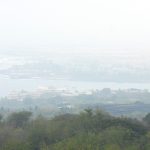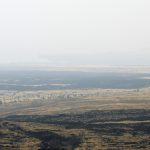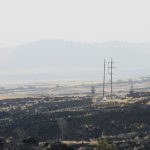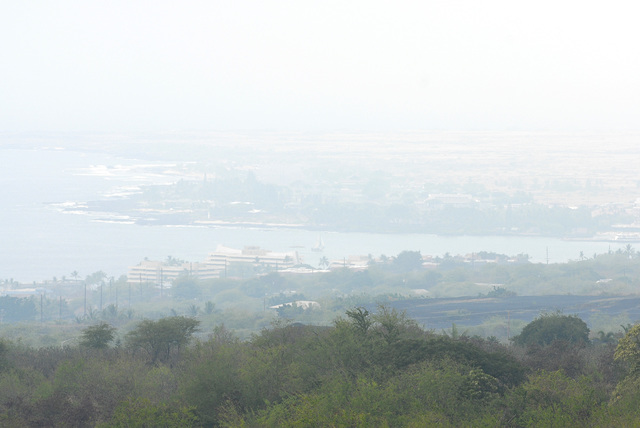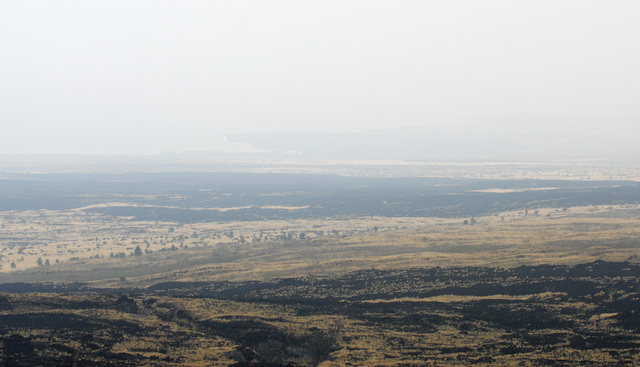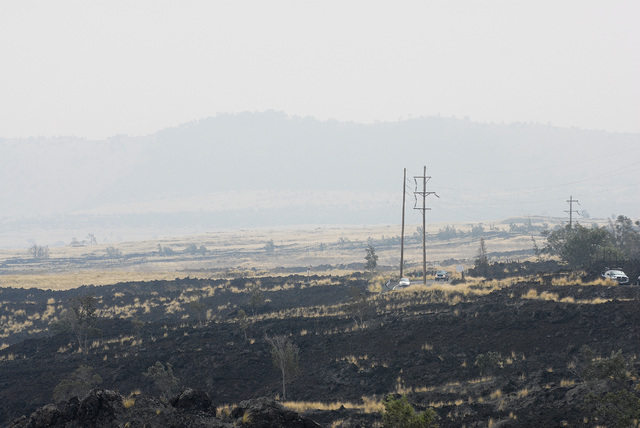West Hawaii has been smothered under smoke and vog for the past couple of days.
While firefighters successfully douse the brushfires that have helped cloud the Gold Coast, a prevailing wind pattern from west to east, then from the south, means a muddied mass of vog-carrying air currents will keep stirring the voggy soup over the island for at least a few more days.
So there’s relief from the smoke, but not from Madam Pele.
Clear skies will arrive when the normal trade wind pattern re-establishes, said Chevy Chevalier, forecaster with the National Weather Service in Honolulu.
“When we get the normal trade winds out of the northeast, most of the concentration of vog is going to go down to the southwest, away from people,” Chevalier said.
Had they arrived in time, those trades would also have helped push out the brushfire smoke from a smoldering blaze near the Komohana Kai subdivision. Instead, breezes off the ocean have helped keep the smoke and vog trapped against the mountains and around Kailua-Kona, Chevalier said.
Light trades will establish only briefly before a southerly flow develops Sunday ahead of a new front approaching from the northwest, according to NWS. That’ll keep the vog around for several more days.
Resident reactions to the layers of gray air range from indifference to indignation. But there’s a common theme: Vog is here to stay.
“What do we do? Plug the volcano?” said Randy Osgood, a Kona Sunset resident who closed windows against the smell of the Komohana Kai fire on Wednesday and Thursday.
Osgood was philosophical about a multiday bout with polluted air that closed the Family Court building on Nalani Street on Wednesday.
But Glen Cho is ready to throw in the towel and leave town because of the vog. He moved here from Texas a year ago, and since had dealt with recurrent headaches. His doctor told him he’s being affected by the volcanic smog.
“I’m on all kinds of medication,” said Cho, standing behind the counter of an Alii Drive coffeehouse. “I’m preparing to leave the island. The vog is killing me.”
Cho said more information needs to be available on when the vog will descend and how long it will stay.
The Hawaii Department of Health compiles and publishes air quality data, available on an interactive map on its website. Data is available for five locations from Ocean View to Hilo. However, no measurements are currently available for Kona.
The University of Hawaii School of Ocean and Earth Science and Technology hosts an online vog measurement and prediction project. The site has information on current conditions, trends and predictions for eight sites around the island.
Hawaiian Volcano Observatory also publishes an online site which shows vog intensity and the direction of the vog plumes within the national park.
For more information, visit
http://hiso2index.info/
http://weather.hawaii.edu/vmap/html/about_vmap.htm
Email Bret Yager at byager@westhawaiitoday.com.
